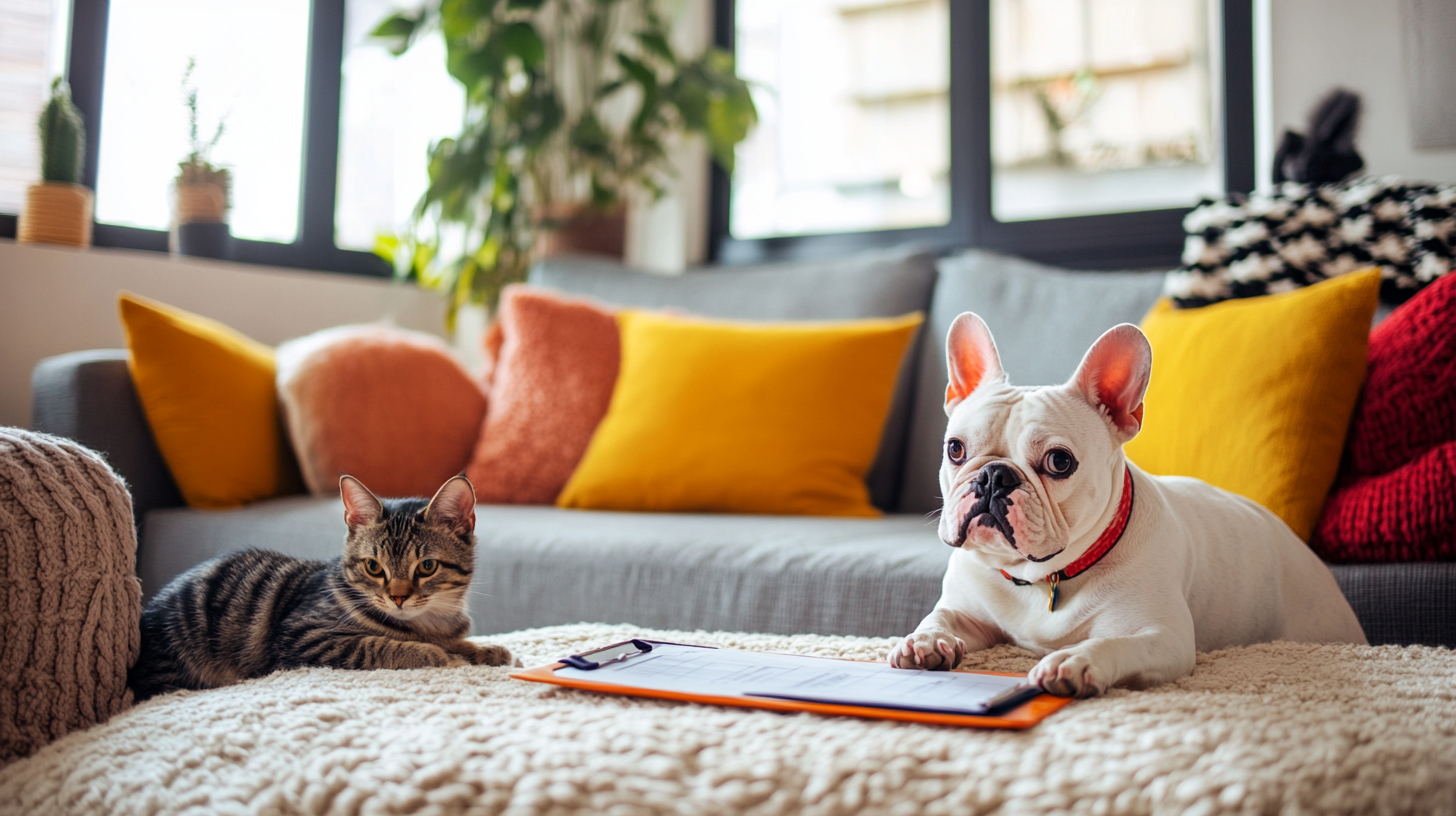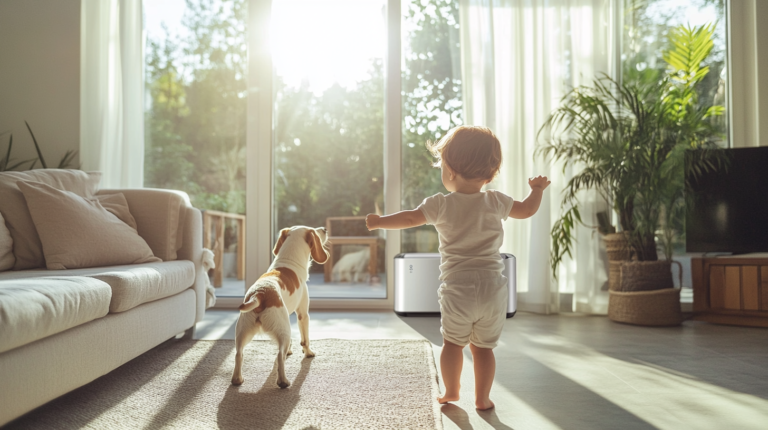Discover our complete pet home cleaning schedule guide for 2025. Learn daily, weekly, and seasonal cleaning strategies to maintain a fresh home while enjoying your furry friends!
Table of Contents
Living with pets brings immeasurable joy, unconditional love, and unfortunately, a considerable amount of mess. From shedding fur and tracked-in dirt to occasional accidents and lingering odors, maintaining a clean home when you have pets requires strategic planning, consistency, and the right tools. This comprehensive pet home cleaning schedule guide for 2025 will help you create a sustainable cleaning routine that works for both you and your furry companions.
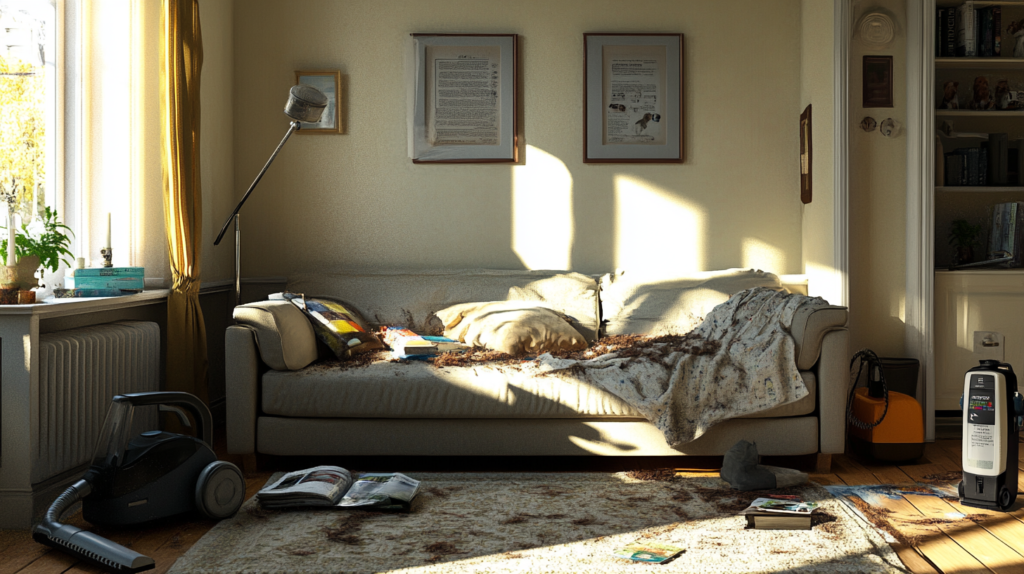
Understanding the Pet Cleaning Challenge
Anyone who has welcomed a pet into their home knows that pet ownership transforms cleaning from a simple chore into a constant battle against fur, dander, and unexpected messes. According to a 2024 survey by the American Pet Products Association, 70% of pet owners report spending at least 2-3 additional hours per week on cleaning due to their pets. This statistic illustrates why having an effective pet home cleaning schedule is not just helpful—it’s essential.
Dr. Emily Landon, a veterinarian and pet hygiene specialist, explains: “Many pet owners don’t realize that regular cleaning isn’t just about maintaining a presentable home—it’s crucial for the health of both pets and humans. Pet dander and hair can exacerbate allergies and respiratory issues, while unaddressed pet messes can lead to bacterial growth and unpleasant odors.”
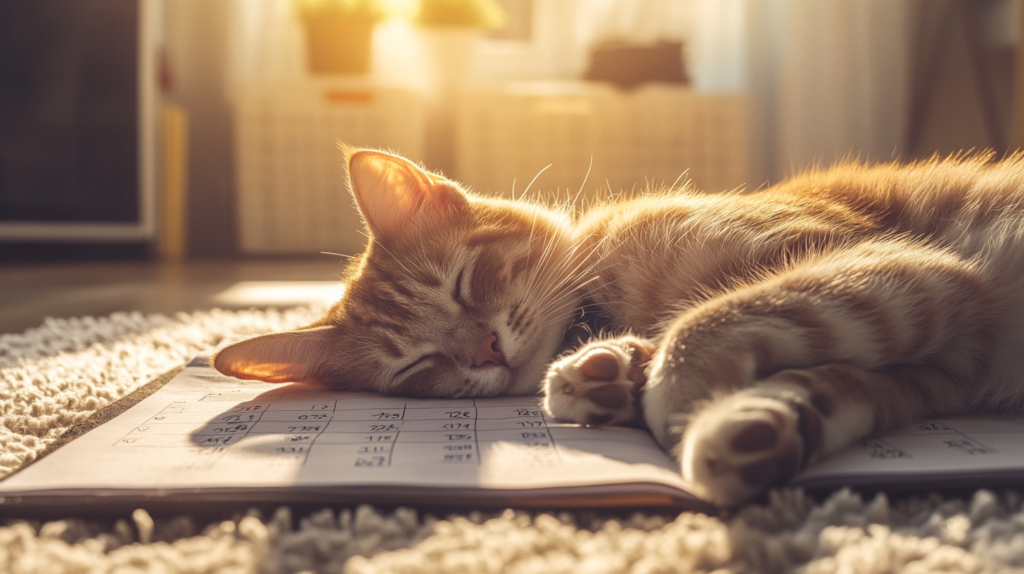
The Benefits of Establishing a Pet Home Cleaning Schedule
Creating and following a consistent pet home cleaning schedule offers numerous advantages:
- Improved indoor air quality: Regular cleaning reduces pet dander, fur, and other allergens in your home’s air.
- Reduced stress: A clean home creates a more relaxing environment for both you and your pets.
- Less intense cleaning sessions: Consistent maintenance cleaning prevents the need for exhausting deep-cleaning marathons.
- Extended lifespan of furnishings: Prompt cleaning of pet messes helps preserve furniture, carpets, and other home items.
- Better pet health: Clean environments reduce the risk of pet-related infections and parasites.
- Enhanced human-pet bond: A clean home makes living with pets more enjoyable, strengthening your relationship.
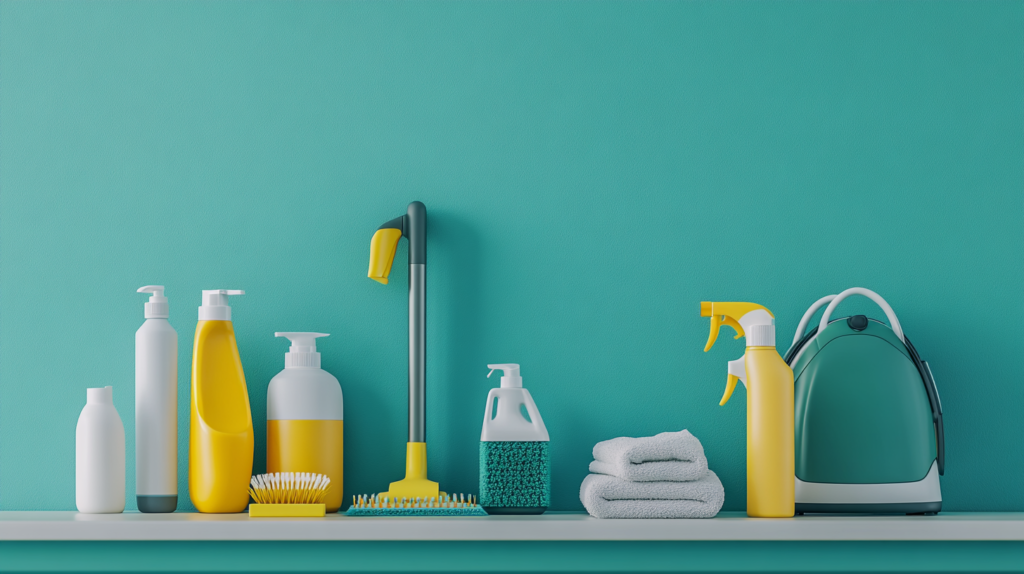
Essential Cleaning Tools for Pet Owners
Before diving into your pet home cleaning schedule, ensure you have the right tools for the job:
Vacuum Cleaners
Invest in a high-quality vacuum designed specifically for pet hair. The latest 2025 models feature enhanced suction power, specialized pet hair attachments, and HEPA filtration to capture even the smallest particles of dander.
Microfiber Cloths and Mops
Microfiber materials are exceptionally effective at trapping pet hair and dander. They can be used wet or dry and are washable, making them an eco-friendly option.
Pet-Safe Cleaning Products
Choose cleaning solutions formulated to be safe for pets, as standard cleaning chemicals can be harmful if ingested or absorbed through paw pads. Look for products labeled “pet-safe” or consider natural alternatives like vinegar, baking soda, and hydrogen peroxide for most cleaning needs.
Lint Rollers and Rubber Gloves
Keep lint rollers throughout your home for quick fur removal from clothing and furniture. Dampened rubber gloves can also effectively gather pet hair from upholstery.
Air Purifiers
Consider adding an air purifier with a HEPA filter to your most-used rooms to continuously filter pet dander and odors from the air.
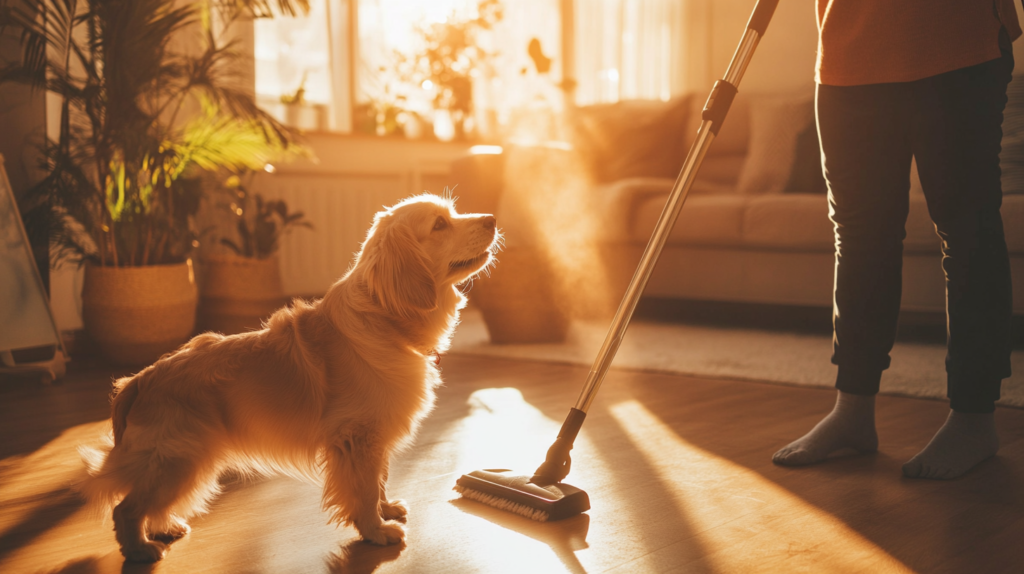
Daily Pet Home Cleaning Tasks
Incorporating these quick daily tasks into your routine will prevent pet mess buildup:
1. Fur Management
- Spend 5-10 minutes daily sweeping or vacuuming high-traffic areas.
- Use a lint roller on furniture where pets frequently rest.
- Brush pets outdoors daily to reduce indoor shedding (breed-dependent).
2. Litter Box Maintenance
- Scoop litter boxes at least once daily, preferably twice.
- Wipe any litter tracking with a microfiber cloth.
- Replace soiled litter as needed to control odors.
3. Entry Point Cleaning
- Keep pet wipes or a small towel near doors to clean muddy paws.
- Shake out or vacuum entry mats daily.
- Wipe down pet door flaps if applicable.
4. Quick Spot Cleaning
- Address any accidents or spills immediately to prevent staining.
- Keep pet-safe cleaning spray accessible for quick cleanups.
- Clean food and water bowl areas after meals.

Weekly Pet Home Cleaning Schedule
Dedicate time each week for more thorough cleaning tasks:
1. Comprehensive Vacuuming and Mopping
- Vacuum all floors, including under furniture and in corners.
- Use vacuum attachments on upholstery, curtains, and baseboards.
- Mop hard floors with pet-safe cleaning solution.
2. Bedding and Fabric Maintenance
- Wash pet beds, blankets, and fabric toys (use pet-safe detergent).
- Launder or vacuum slipcovers and cushion covers as needed.
- Treat fabric furniture with pet odor eliminator spray.
3. Thorough Litter Box Cleaning
- Empty, clean, and disinfect litter boxes weekly.
- Replace litter completely and wipe down the surrounding area.
4. Pet Accessory Cleaning
- Wash food and water bowls thoroughly (ideally dishwasher-safe).
- Disinfect plastic toys in a solution of vinegar and water.
- Clean and disinfect pet carriers or crates if used.
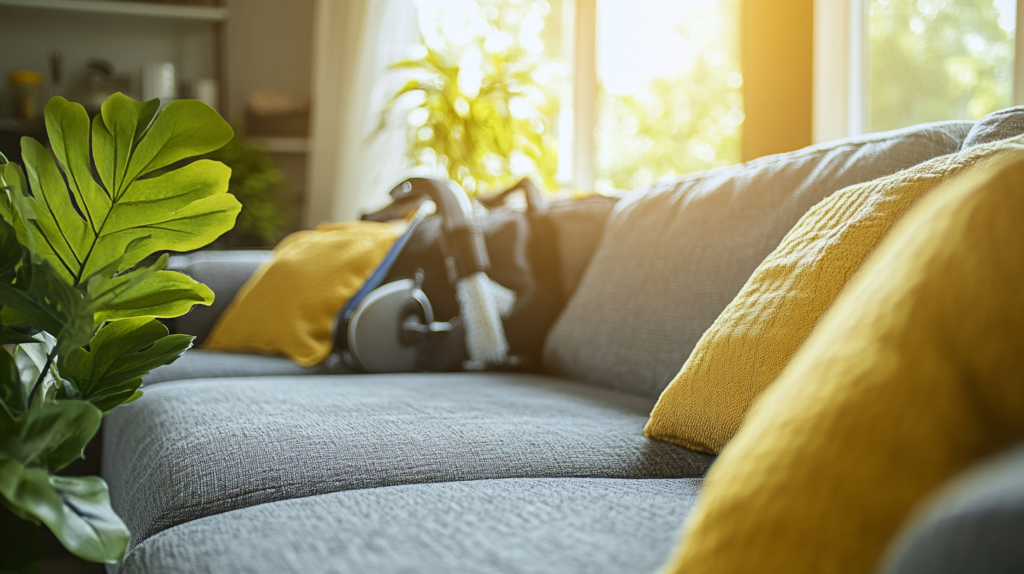
Monthly Pet Home Cleaning Tasks
These deeper cleaning tasks should be performed monthly:
1. Furniture Deep Cleaning
- Move furniture to vacuum underneath and behind.
- Steam clean upholstery if appropriate for the fabric.
- Check for and address any pet damage to furniture.
2. Air Quality Maintenance
- Replace air purifier filters as recommended.
- Clean ceiling fans and air vents to remove pet hair buildup.
- Wash or replace HVAC filters monthly instead of quarterly.
3. Window Treatments
- Vacuum curtains and blinds to remove accumulated pet hair.
- Launder machine-washable curtains or have them professionally cleaned.
- Clean windowsills where pets often look outside.
4. Carpet Treatment
- Apply pet-specific carpet deodorizer before vacuuming.
- Spot treat any stains that were missed during weekly cleaning.
- Consider scheduling professional carpet cleaning quarterly.

Seasonal Deep Cleaning Schedule for Pet Owners
Four times a year, tackle these more intensive cleaning projects:
1. Spring Cleaning (March/April)
- Shampoo or steam clean all carpets and rugs.
- Wash walls, particularly at pet height where oils can accumulate.
- Clean behind major appliances where pet hair can collect.
- Inspect and repair any pet damage to screens or doors.
2. Summer Cleaning (June/July)
- Deep clean outdoor pet areas, including dog houses or cat enclosures.
- Power wash outdoor play equipment and pet furniture.
- Clean window screens that collect pet hair.
- Sanitize pet cooling mats and summer toys.
3. Fall Cleaning (September/October)
- Clean and store summer pet items.
- Deep clean entryways to prepare for muddy fall weather.
- Check heating vents for pet hair before turning on heat.
- Wash all pet winter gear and bedding.
4. Winter Cleaning (December/January)
- Deep clean pet resting areas that get more use during cold weather.
- Sanitize indoor pet play areas that see increased winter activity.
- Clean salt or ice melt from entryways to protect pet paws.
- Wash any holiday-specific pet toys and accessories.
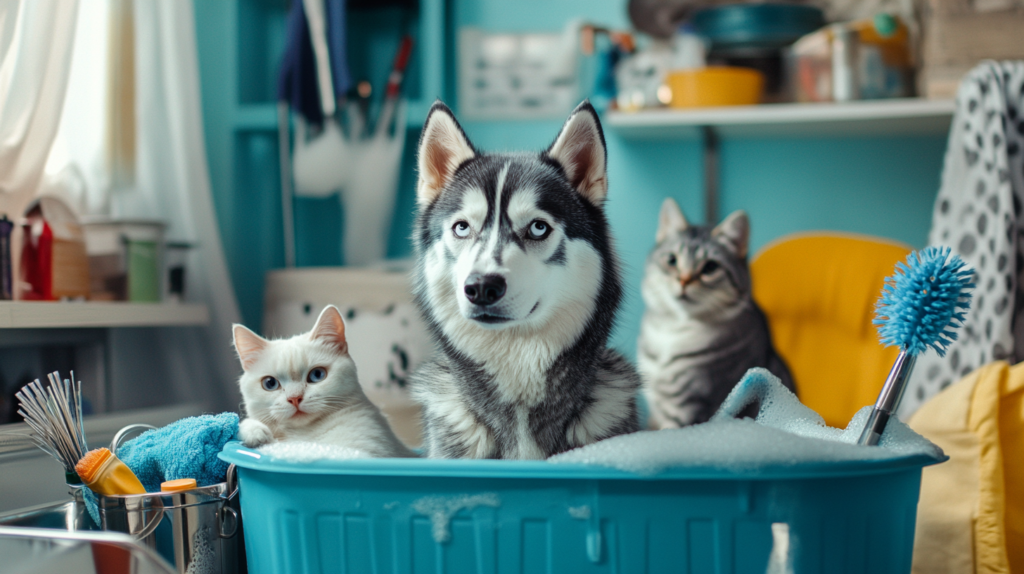
Special Cleaning Considerations by Pet Type
Different pets create different cleaning challenges. Here’s how to adapt your pet home cleaning schedule based on your specific furry friends:
Dogs
- Shedding Breeds: Increase vacuuming frequency during seasonal coat blows (typically spring and fall).
- Drooling Breeds: Wipe down walls and furniture more frequently to prevent saliva buildup.
- Outdoor Dogs: Establish a mudroom or transition area for cleaning paws and coats before entering the main living space.
Cats
- Indoor Cats: Pay special attention to areas around litter boxes and vertical surfaces where they mark by rubbing.
- Long-haired Breeds: Implement more frequent brushing and vacuuming to manage fur.
- Scratching Behavior: Regularly clean around scratching posts where cardboard or fabric fibers accumulate.
Small Mammals (Hamsters, Guinea Pigs, Rabbits)
- Cage Cleaning: Establish a regular schedule for complete habitat cleaning.
- Exercise Areas: Vacuum and sanitize areas where these pets play outside their cages.
- Bedding Management: Create a system for containing and disposing of soiled bedding.
Birds
- Seed Husks: Vacuum or sweep around cages daily to manage scattered seed hulls.
- Dander Control: Use air purifiers specifically designed to capture the fine powder dander from birds.
- Cage Trays: Line with paper for easy daily cleaning.
Pet Home Cleaning Schedule Templates
To help you implement these recommendations, here are customizable cleaning schedule templates for different household situations:
For Working Pet Parents (Limited Time)
| Time | Daily | Weekly | Monthly | Seasonal |
| Morning (5-10 min) | Quick vacuum of main area; Wipe paw prints | – | – | – |
| Evening (10-15 min) | Spot clean messes; Lint roll furniture | – | – | – |
| Weekend morning | – | Full house vacuum; Wash pet bedding | – | – |
| Weekend afternoon | – | Mop floors; Clean pet accessories | Deep clean one room | Seasonal deep clean |
For Multi-Pet Households
| Time | Daily | Weekly | Monthly | Seasonal |
| Morning (10-15 min) | Vacuum high-traffic areas; Clean litter boxes | – | – | – |
| Midday (5 min) | Quick fur sweep; Check for accidents | – | – | – |
| Evening (15 min) | Spot clean; Wipe down surfaces | – | – | – |
| Weekend morning | – | Full house vacuum; Wash all pet bedding | – | – |
| Weekend afternoon | – | Mop all floors; Clean all pet accessories | Deep clean soft furnishings | Seasonal deep clean |
For Allergy Sufferers with Pets
| Time | Daily | Weekly | Monthly | Seasonal |
| Morning (15 min) | HEPA vacuum bedroom and living spaces | – | – | – |
| Midday (5 min) | Wipe down surfaces with microfiber cloth | – | – | – |
| Evening (10 min) | Vacuum again; Run air purifier | – | – | – |
| Weekend morning | – | Full house vacuum; Wash all bedding (human and pet) | – | – |
| Weekend afternoon | – | Mop all floors; Clean all fabric surfaces | Replace air filters; Deep clean one room | Professional cleaning services |
Time-Saving Tips for Pet Home Cleaning
Keeping a clean home with pets doesn’t have to consume all your free time. Try these efficiency tips:
1. Strategic Furniture Placement
Position furniture to create easy-to-clean paths and minimize areas where pet hair can accumulate.
2. Pet-Friendly Materials
When possible, choose:
- Leather or vinyl furniture instead of fabric
- Washable slipcovers for existing furniture
- Hard flooring over carpeting in high-traffic pet areas
- Stain-resistant rugs and fabrics
3. Automated Cleaning Tools
- Robotic vacuums programmed to run while you’re away
- Automatic litter boxes that self-clean
- Timed air purifiers that increase function during high-activity periods
4. Containment Strategies
- Use baby gates to keep pets from accessing certain areas
- Designate specific pet-friendly furniture to contain hair
- Create washable pet zones with easy-to-clean materials
5. Efficient Cleaning Order
- Always clean from top to bottom (dust ceiling fans before vacuuming floors)
- Start from the furthest point and work toward the exit
- Complete one task throughout the house rather than cleaning one room at a time
Eco-Friendly Pet Home Cleaning Approaches
Many pet owners are increasingly concerned about using environmentally-friendly cleaning methods. Here are sustainable approaches to maintain your pet home cleaning schedule:
1. Natural Cleaning Solutions
- All-Purpose Cleaner: Mix equal parts water and white vinegar with a few drops of pet-safe essential oils like lavender.
- Carpet Deodorizer: Sprinkle baking soda on carpets, let sit for 15 minutes, then vacuum.
- Window Cleaner: Mix 1 part vinegar with 4 parts water in a spray bottle.
2. Sustainable Tools
- Bamboo Brushes: Use biodegradable scrubbing brushes for tough pet messes.
- Swedish Dish Cloths: These washable, compostable cloths replace paper towels for quick cleanups.
- Reusable Mop Pads: Switch to washable microfiber mop pads instead of disposables.
3. Waste Reduction
- Compostable Poop Bags: Choose biodegradable options for waste disposal.
- Bulk Cleaning Products: Purchase cleaning concentrates to reduce packaging waste.
- DIY Cleaners: Make your own solutions to eliminate plastic bottle waste.
Technology Integration for Pet Home Cleaning
The latest smart home technology can significantly improve your pet home cleaning efficiency:
1. Smart Vacuums
The newest generation of robotic vacuums offers pet-specific features:
- Self-emptying bins that need attention less frequently
- AI-powered obstacle avoidance (including pet waste)
- App-controlled cleaning zones and schedules
- Camera monitoring to identify high-mess areas
2. Smart Air Purifiers
- Automatically increase filtration when sensors detect increased pet dander
- Scheduled operation to filter air during shedding seasons
- Integration with other smart home devices
3. Pet Activity Trackers
- Monitor your pet’s movements to identify high-traffic areas that need more frequent cleaning
- Establish cleaning schedules based on pet behavior patterns
- Anticipate cleaning needs based on activity levels
Handling Special Pet Cleaning Situations
Even with the best pet home cleaning schedule, unexpected situations arise. Here’s how to handle them:
1. Managing Pet Accidents
- Blot (don’t rub) fresh stains with absorbent cloth
- Use enzymatic cleaners specifically designed to break down pet waste
- For set-in stains, consider renting a professional-grade extractor
2. Dealing with Excessive Shedding
- Implement more frequent brushing during shedding seasons
- Consider professional deshedding treatments
- Use furniture covers that can be easily removed and washed
3. Eliminating Persistent Pet Odors
- Identify and thoroughly clean the source rather than masking with air fresheners
- For severe cases, use an ozone generator (when pets and humans are not present)
- Replace air filters more frequently during odor problems
4. Post-Illness Cleaning
After a pet has been sick:
- Sanitize all surfaces they contacted
- Wash all bedding in hot water
- Consider temporary confinement to a easily cleanable area during recovery
The Impact of Pet Home Cleaning on Health
Maintaining a clean home environment is particularly important for households with both pets and people with compromised immune systems, allergies, or respiratory conditions.
Dr. Michael Stern, an immunologist at the Center for Allergies and Respiratory Health, notes: “Pet dander isn’t just a nuisance—it’s a significant trigger for asthma and allergies. Consistent cleaning using HEPA filtration can reduce airborne pet allergens by up to 90%, making a profound difference for sensitive individuals.”
Research from the Environmental Health Journal indicates that homes with pets have approximately 2-5 times more dust and dander than pet-free homes. However, homes that implement rigorous cleaning schedules can maintain air quality comparable to homes without pets.
Creating a Sustainable Pet Home Cleaning Habit
To maintain your pet home cleaning schedule long-term:
1. Start Small
Begin with the most essential tasks and gradually build your routine.
2. Use Visual Reminders
Create a visible cleaning calendar or checklist for your household.
3. Involve All Family Members
Assign age-appropriate pet cleaning responsibilities to everyone.
4. Reward Consistency
Celebrate successful cleaning streaks with rewards that motivate your household.
5. Adjust as Needed
Recognize that pet cleaning needs change with seasons, pet ages, and household circumstances.
Cleaning Products to Avoid Around Pets
While establishing your pet home cleaning schedule, be aware of these potentially harmful products:
- Phenols: Found in many disinfectants, these can cause liver damage in pets, especially cats.
- Ammonia: Can cause respiratory irritation and eye damage.
- Bleach: Toxic if ingested and can irritate respiratory systems.
- Formaldehyde: Found in some household cleaners and potentially carcinogenic.
- Essential Oils: Many concentrated oils are toxic to pets, particularly cats.
Always read product labels, keep cleaning supplies stored securely, and ensure surfaces are completely dry before allowing pet access.
Professional Cleaning Services for Pet Owners
Sometimes, professional intervention is worth the investment:
When to Consider Professional Services
- Before moving out of a rental property
- After major pet illness or accidents
- During particularly heavy shedding seasons
- If dealing with severe allergies or respiratory issues
- When deep cleaning is beyond your capabilities or time constraints
What to Look For in Pet-Friendly Services
- Experience with pet-specific cleaning challenges
- Pet-safe cleaning products and methods
- HEPA filtration equipment
- Certification in odor removal techniques
Cost Considerations
Professional pet-specific cleaning services typically range from $150-$300 for a standard home, with additional costs for specialized treatments like:
- Enzymatic treatments for pet stains ($50-$100 per area)
- Upholstery deep cleaning ($100-$200)
- Air duct cleaning ($300-$500)
- Ozone treatments for odor removal ($200-$400)
For More Pet Cleaning Advice
For more expert pet care tips and product recommendations, visit BlithePet.com — your trusted source for pet wellness.
Frequently Asked Questions About Pet Home Cleaning
How often should I vacuum if I have pets?
For homes with pets, daily vacuuming of high-traffic areas is recommended, with a complete home vacuum at least twice weekly. During heavy shedding seasons, you may need to vacuum main living areas twice daily. Using a vacuum with a HEPA filter and strong suction specifically designed for pet hair will make this task more effective.
What’s the best way to remove pet hair from furniture?
For quick removal, dampen a rubber glove and run it over upholstery to collect hair. For more thorough cleaning, use a vacuum with upholstery attachments. Lint rollers work well for small areas, while electrostatic or microfiber cloths can effectively capture hair from larger surfaces. Regular brushing of your pet will also significantly reduce the amount of hair on furniture.
How can I eliminate pet odors without using harsh chemicals?
Start by identifying and thoroughly cleaning the source of the odor using enzymatic cleaners specifically formulated for pet messes. For general odor control, regularly wash pet bedding, use baking soda as a carpet deodorizer before vacuuming, and place activated charcoal odor absorbers in problem areas. Air purifiers with activated carbon filters can also help remove pet odors from the air.
What’s the most efficient cleaning schedule for a multi-pet household?
Multi-pet households benefit from a layered approach: 15-20 minutes of daily maintenance cleaning (vacuuming high-traffic areas, wiping surfaces, spot cleaning), more thorough cleaning twice weekly (complete vacuuming, mopping, laundering pet items), and monthly deep cleaning (furniture moving, baseboards, under appliances). Distributing specific tasks among household members can make this schedule more manageable.
How do I clean pet toys safely?
Hard plastic or rubber toys can be washed in a solution of warm water and mild dish soap, then rinsed thoroughly and air-dried. Soft toys should be checked for manufacturer’s instructions—many can be machine washed in hot water with pet-safe detergent and dried on high heat to kill bacteria. Rope toys can be microwaved when slightly damp for 1-2 minutes to sanitize, or soaked in a weak bleach solution (1:10 ratio with water) then thoroughly rinsed and dried.
How can I keep my home clean with an outdoor dog?
Create a transition zone at your home’s entrance with washable mats, keep towels and pet wipes by the door, and consider using washable runners on high-traffic indoor paths. Training your dog to wait at the door for paw cleaning can significantly reduce tracked-in dirt. During muddy seasons, you might invest in dog booties or a portable paw washer for particularly dirty outings.
Conclusion
Maintaining a clean home while sharing your life with pets requires intention, consistency, and the right approach. By implementing a strategic pet home cleaning schedule that addresses daily, weekly, monthly, and seasonal needs, you can create a healthier environment for both your family and your pets.
Remember that the goal isn’t perfection—it’s finding a sustainable balance that allows you to enjoy the companionship of your pets without being overwhelmed by the cleaning demands they create. Adapt these recommendations to your specific situation, pets, and home to create a customized cleaning routine that works for you.
With the right tools, techniques, and consistency, you can maintain a clean, fresh-smelling home that welcomes both two-legged and four-legged family members.
Have a similar experience with your pet? Share it in the comments below!

